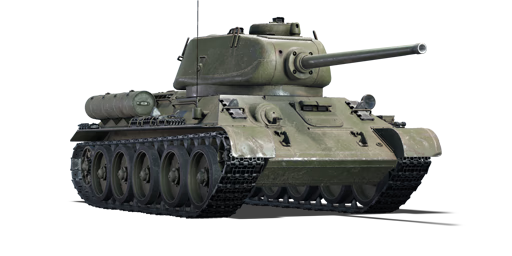



The T-34-85 (D-5T) is a Soviet medium tank. It was introduced during the Closed Beta Test for Ground Forces before Update 1.41. This T-34 model is introduced with the formidable 85 mm gun on a tank mount. With a newer, strengthened turret, it can prove to be a menace at its battle rating. Though formidable, the Soviet upgraded the 85 mm gun to the improved ZiS-S-53 variant on the T-34-85 model.
Operational and visual characteristics of the T-34-85(D-5T) are as similar and as common to previous T-34 lineage of tanks as they come, with the exception of a new turret and more powerful cannon. Players experienced in operating previous models of the T-34 in Rank II should have little to no difficulty in adjusting to this vehicle. The same can be said, unfortunately, about opposition forces facing this vehicle. The T-34-85(D-5T) inherits both its predecessors' strengths and weaknesses.
The T-34-85 works very well with other allied tanks (British and American) that it is often paired with in RB and SB. It retains high mobility and an effective main gun, allowing it to quickly get to capture points (usually following M18s, which are often first at the scene). Here the T-34-85 (D-5T) can capture the points and then hold them until heavier reinforcements arrive. This means that often the team will have early superiority over the capture points.
| Ammunition | Type | Armor penetration (mm) at a distance: | |||||
|---|---|---|---|---|---|---|---|
| 10 m | 100 m | 500 m | 1000 m | 1500 m | 2000 m | ||
| APHE | 148 | 143 | 126 | 106 | 90 | 77 | |
| HE | 19 | 18 | 17 | 16 | 15 | 14 | |
| APHEBC | 135 | 133 | 124 | 114 | 104 | 95 | |
| Belt | Belt filling | Armor penetration (mm) at a distance: | |||||
|---|---|---|---|---|---|---|---|
| 10 m | 100 m | 500 m | 1000 m | 1500 m | 2000 m | ||
| AP-I/API-T | 13 | 12 | 7 | 3 | 2 | 0 | |












Mobility | |
|---|---|
Protection |
|---|
Firepower | |
|---|---|
